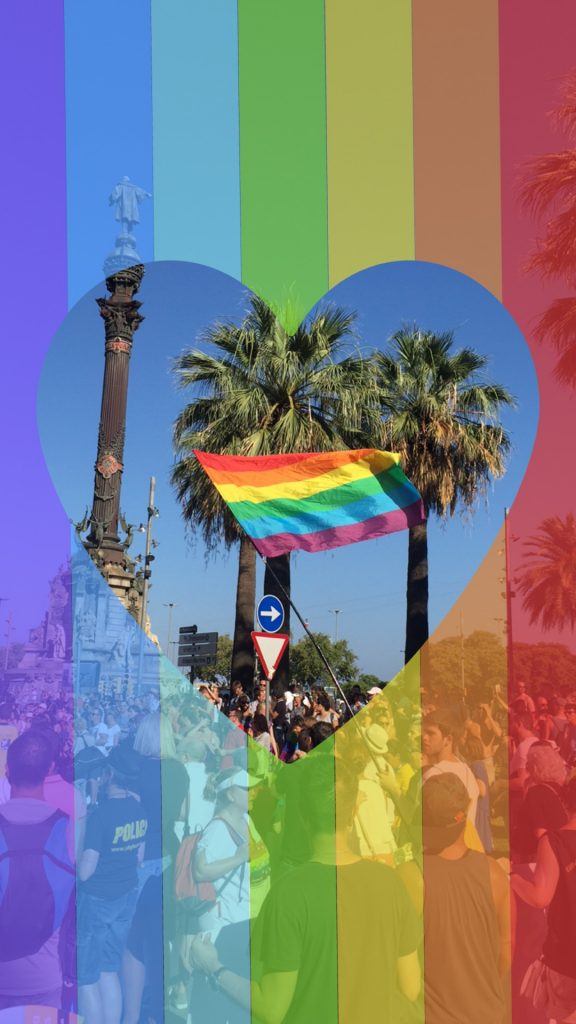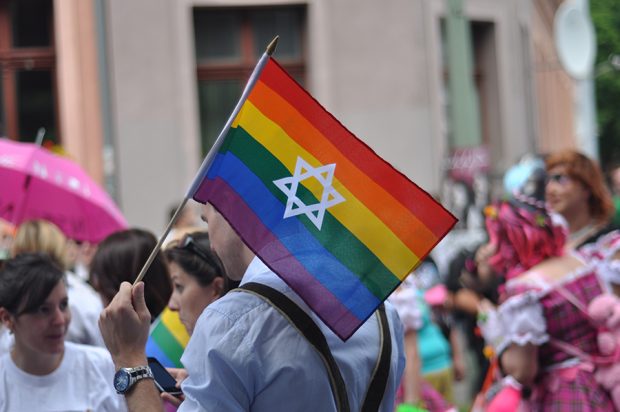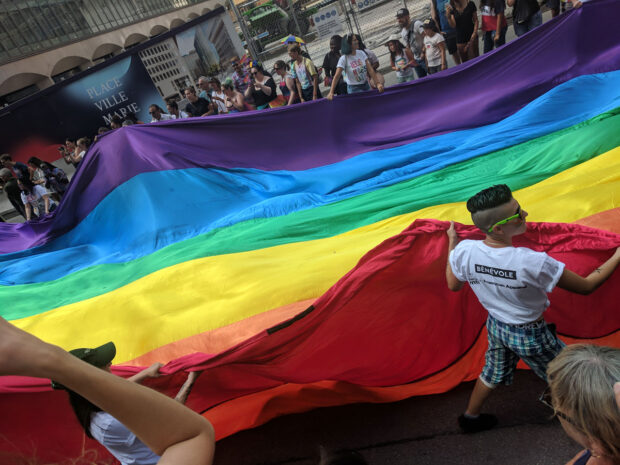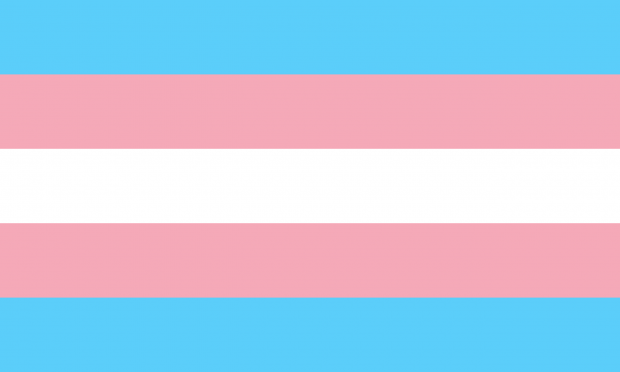Today, I want to share a little bit about something that always manages to light up my heart and put a spring in my step – the vibrant and meaningful Gay Pride Flag.
After the news the other week about a shop owner in California who was killed for simply hanging a pride flag on her shop window, I realized I wanted to share what the pride flag means to me. It’s an important symbol, and in these troubling times for LGBTQ individuals in the United States, I think it’s more important than ever to support those businesses that show their support for queer people.
🏳️🌈
Yep, that colorful masterpiece that’s like a beacon of love and acceptance in a sometimes not-so-accepting world.
There’s a special moment when you’re walking down the street, exploring a new neighborhood, or just checking out your favorite local spots on Google Maps, and there it is – the pride flag hanging proudly on a business window or displayed as a little emoji, signaling that this place is all about inclusivity and celebrating diversity.

Every single time I see it, it’s like a burst of happiness and a reassurance that there are good vibes to be found.
I’m not sure about you, but for me, it’s impossible to ignore that burst of color. It’s like an instant mood-lifter. I mean, who wouldn’t smile when greeted by that brilliant spectrum of hues that represent unity, love, and the beautiful tapestry of the LGBTQ+ community? It’s like a non-verbal “Hey, you’re welcome here, just as you are” message, and honestly, that’s something we could all use more of in this world.
Now, let’s talk about the magic that happens when I see that flag in unexpected places.
Picture this: I’m strolling down a street, my mind buzzing with errands and to-dos, and bam! There it is – the pride flag hanging outside a cafe or a boutique. Instantly, my focus shifts. It’s like a reminder to pause, take a deep breath, and acknowledge that I’m in a space where I’m not just accepted, but celebrated. It’s like someone giving you a warm hug when you least expect it.
And don’t even get me started on those rainbow emojis on Google Maps.
Those tiny pride flag icons brighten up my entire day. When I see that LGBTQ+ pride flag emoji next to a business, it’s like a secret code that we’re all part of this amazing, diverse family. It’s like someone saying, “Hey, we’ve got your back, and we’re excited to have you here.”
I don’t know about you, but that simple gesture makes me feel like a valued member of the community.
But you know what the best part is? When I see that flag – whether it’s a physical one on a storefront or a digital one on a screen – I don’t just stop at appreciation. Nope, I take action.

If a local business is making an effort to show they’re LGBTQ+ friendly, you can bet I’m gonna be their biggest cheerleader. It’s like an unspoken pact – they’ve gone out of their way to make me feel welcome, and in return, I want to support them with all my heart.
So, I’ll grab a cup of coffee from that cafe, I’ll check out that boutique, and I’ll spread the word about these awesome places that are making a difference.
To me, the Gay Pride Flag is more than just colors on a piece of fabric; it’s a symbol of hope, love, and the progress we’re making toward a more accepting world. So, next time you see that flag waving proudly, take a moment to smile and remember that there are people out there who are working to create safe and inclusive spaces for everyone.
And if you’re like me, maybe you’ll also want to show your support by grabbing a latte or checking out that shop – because when we stand together, we create a world that’s brighter, more colorful, and undeniably full of love.

LGBTQ+ Pride Flags & What They Each Mean
The LGBTQ+ community is wonderfully diverse, and different flags represent various identities within the community. Here are some of the most well-known pride flags and their meanings:
Gay Pride Flag (Rainbow Flag) 🏳️🌈
The iconic rainbow flag is a symbol of the entire LGBTQ+ community. It was designed by artist and activist Gilbert Baker in 1978. Each color of the rainbow holds a specific meaning: red for life, orange for healing, yellow for sunlight, green for nature, blue for harmony, and purple for spirit. The flag embodies unity, diversity, and the hope for a world where all sexual orientations and gender identities are respected.
Lesbian Pride Flag
The lesbian pride flag consists of various shades of orange and pink. It was created by Natalie McCray in 2010. The colors represent different aspects: dark orange for gender non-conformity, orange for independence, light orange for community, white for gender identity, and pink for love and sex.
Bisexual Pride Flag
The bisexual pride flag, designed by Michael Page in 1998, features three horizontal stripes. Pink represents same-sex attraction, blue represents opposite-sex attraction, and the overlap of the two colors symbolizes bisexuality.

Transgender Pride Flag
The transgender pride flag was created by transgender activist and Navy veteran Monica Helms in 1999. It consists of five horizontal stripes: blue for boys, pink for girls, and white for those who are non-binary or don’t identify strictly as male or female.
Pansexual Pride Flag
The pansexual pride flag is made up of three horizontal stripes. Pink represents attraction to those of the same gender, blue represents attraction to those of a different gender, and yellow in the middle symbolizes attraction to all genders.
Asexual Pride Flag
The asexual pride flag was created by AVEN (Asexual Visibility and Education Network) in 2010. It features black for asexuality, gray for gray-asexuality and demisexuality, white for allies or non-asexual partners, and purple for community.
Non-Binary Pride Flag
The non-binary pride flag was created by Kye Rowan in 2014. It consists of four horizontal stripes: yellow for those who identify outside the traditional gender binary, white for those with many genders, purple for those with a mix of both binary and non-binary genders, and black for those who identify as without gender.
Genderqueer Pride Flag
The genderqueer pride flag, designed by Marilyn Roxie in 2011, features stripes of lavender, white, and dark green. Lavender represents androgyny, white stands for agender identities, and dark green symbolizes non-binary identities.
These are just a few examples of the diverse range of LGBTQ+ pride flags that exist, each celebrating a unique aspect of the community. The beauty of these flags lies in their ability to promote visibility, understanding, and acceptance for individuals of various sexual orientations and gender identities.
